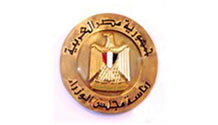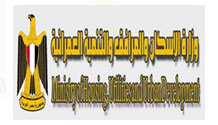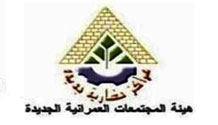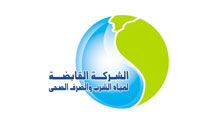Egypt - Electricity Power Systems
Electricity generation has tripled since 1997, to over 180 TW h in 2015, according to the BP Statistical Review of World Energy. Energy output and consumption is expected to continue growing at remarkable rates as much of the country, particularly in Upper Egypt, remains underserved. The electricity industry has been traditionally structured both “vertically” (along the functional lines of generation, transmission, and distribution/supply) and “horizontally” into generation and distribution/supply segments with a number of companies operating within each segment.
Egypt’s new Electricity Law, passed in 2015, and its implementing regulations published in 2016, require the unbundling of “vertical” integration, with separate, independent companies responsible for generation, transmission and distribution.
In 2015 the GOE concluded an emergency plan to increase installed generation capacity. Under the plan, GE installed 2.6 GW (Gigawatt) to the grid. Siemens also signed agreement with the GOE to deliver three combined cycle power plants with capacity of 4.8 GW each in the medium term; these plants shall begin to go online in summer 2017 and will have a total capacity of 14.4 GW.
Sub-Sector Best Prospects
- Smart metering
- Transmission lines
- Energy efficiency technologies
- Products and services related to power industries,
- transmission lines and electricity grid
Opportunities
To meet the increasing demand, MOEE is planning to add 51.3 GW to the current installed capacity over the next three to five years, which will be diversified between oil, gas, solar, wind, hydro and nuclear resources.
An Egypt-Saudi interconnection is planned, with the project expected to begin operations in 2017-2018 with a total capacity of 3GW. A study on upgrading the interconnection voltage between Egypt and other North African countries has been carried out, but implementation could suffer long delays due to ongoing instability in Libya. Interconnection studies are ongoing for an Egyptian-European direct interconnection through Greece. In addition, Egypt is considering other projects for the Eastern Nile Basin and an Egypt/Sudan interconnection.
Rapid Development
The extraction of oil and gas has long played a central role in the Egyptian economy, accounting for 15.3% of the country’s total GDP in the 2013/14 financial year, according data from the Central Bank of Egypt
The government received some good news in July 2014 in the form of an announcement by one of the upstream sector’s largest operators, BP, that it would invest $10bn in its Egyptian gas fields over the next four to five years.
Sustainable fuel blends may be an area for development going forward.
Considering Alternatives
Egypt’s domestic energy usage is predominantly reliant on hydrocarbons. According to the “BP Statistical Review of World Energy 2014”, natural gas accounts for 53% of the nation’s primary consumption, followed by oil at 41%. Some 50 power plants are distributed across five generation companies: Cairo, East Delta, Middle Delta, West Delta and Upper Egypt. Rapidly rising demand has encouraged Egypt to seek out alternative energy sources in recent years.
Egypt has an already established hydroelectric capability thanks to the construction of the Aswan High Dam. A sixth power generation firm.
However, given Egypt’s limited water resource, wind and solar technology represent the most promising routes. Prior to the revolution, the Supreme Council of Energy – established in 2006 as a body that coordinates the various policies of the wider energy sector – approved its strategy for electricity generation based on diversifying energy production sources, rationalizing the use of energy and expanding the renewable component. It set a renewable target of 20% of total production by 2030, of which the share of grid-connected wind power will be in the region of 12%, or around 7200 MW.
The development of the country’s wind sector is being undertaken by the New and Renewable Energy Authority (NREA), which currently has seven projects in the implementation or preparation stage, with a combined capacity of 1340 MW. The NREA is also overseeing the development of the national solar energy industry. To date, solar has played a secondary role to wind in the renewables mix. In June 2014 authorities revealed the first details of a major solar energy plant to be built in the Wadi El Gadid region, and to be paid for with $6bn worth of Egyptian and Saudi Arabian financing .
Nuclear
Nuclear power is another possible input for Egypt’s future energy mix. Prior to Egypt’s 2011 revolution, plans for two new nuclear facilities with a total capacity of 4000 MW had reached an advanced stage, with Australia’s Worley Parsons appointed as consultant and a completion date slated for 2019 – which has been pushed to 2025.
Coal
As with many markets around the world, coal is also one of the alternatives being considered in Egypt. The government cleared factories to use coal as an energy source in 2014, and a number of them have already begun to switch over, especially in the cement industry .
Africa electrical infrastructure
Africa has the natural resources – what is needed is financing.
The program for infrastructure development in Africa (PIDA) has forecasted that between 2011 and 2040 energy demand in Africa will grow from 590 to 3,100 TWh
To meet future energy demand in Africa by 2040: US $43 billion dollars of annual capital investment is required. Of that US $43 billion dollars, US $5.4 billion dollars for transmission (regional interconnectors) is required. The current annual investment in Africa energy projects is less than US $5 billion dollars. Regional Integration would save US $33 billion dollars per year - roughly (17%) in power generation costs.
One of the requirements to bring light and power to Africa, there must be the political will to build, manage and maintain a sustainable energy infrastructure in Africa
Power Africa and Middle East pavilion will showcase lucrative opportunity for power & energy solutions providers to meet potential clients, buyer and build partnerships with key government regulators, Egypt utilities, IPPs, ministries and municipalities.
DISCOVER THE LATEST TECHNOLOGIES & SOLUTIONS THAT WILL BE SHOWCASED BY THE TOP LEADING POWER COMPANIES POWERING THE EGYPTIAN POWER & ENERGY SECTOR
Power Africa and Middle East shows
- the latest technology and the components of different types of power plants needed for new and sustainable cities
- Thermal power plants.
- Nuclear power plants.
- Hydro-electric power plants.
- Solar power plants. (Making use of the available solar energy)
- Geo-thermal power generation. (Energy available in the Earth’s crust)
- Tidal power generation.
- Wind power generation (energy available from the wind turbines)
Sectors of display
Power Generation & Distribution
|
|
Green Energy
|
|
Green Engineering & Sustainability
- Energy Conservation and Efficiency
- Carbon Management Solutions
- Emissions Monitoring and Reduction
- Environmental Engineering
- Environment Protection
- Environment-Friendly Products and SMART Technologies
- Government and Regulatory Agencies














